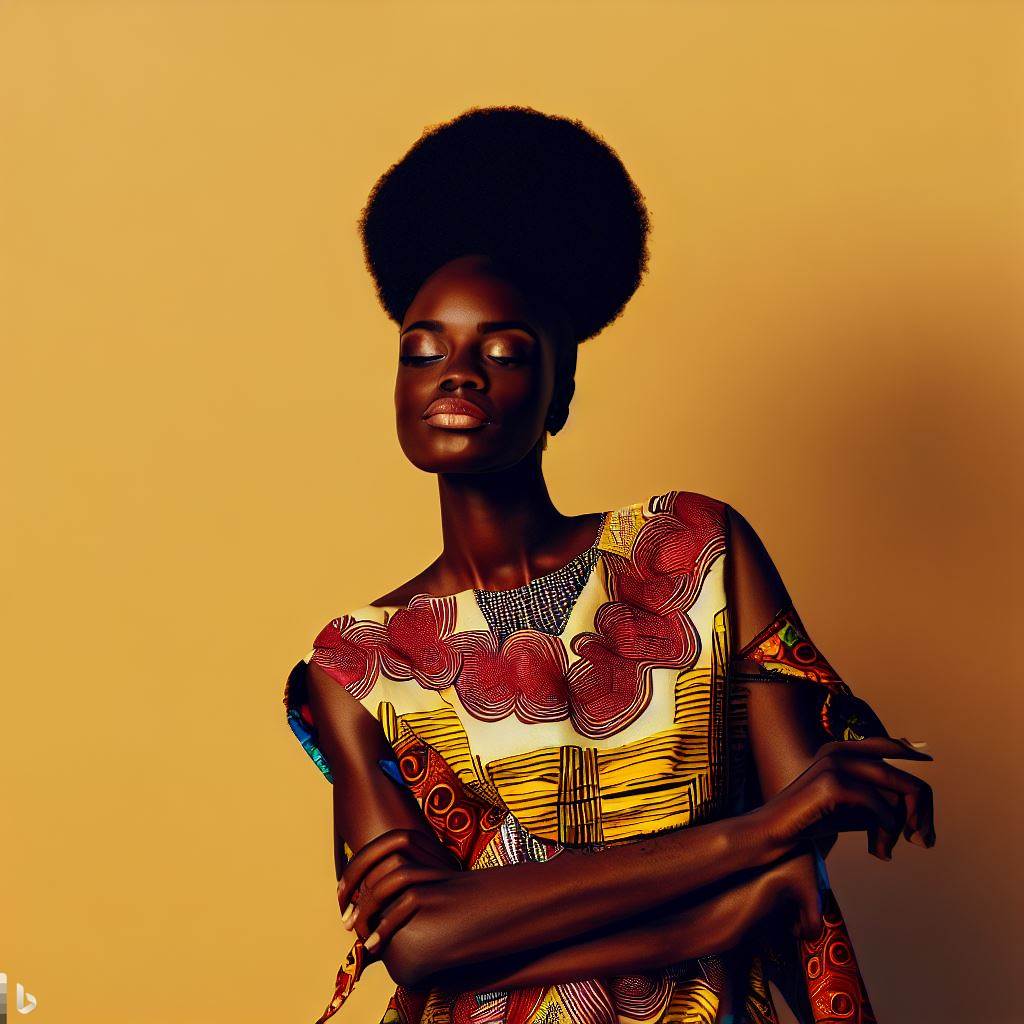Introduction
Design collaboration is the process of working together to create and develop designs. It involves joining forces, combining expertise, and sharing ideas to achieve better outcomes.
Design collaboration is crucial in achieving success as it allows for the exchange of diverse perspectives, innovative ideas, and efficient problem-solving.
In Nigeria, design collaboration plays a vital role in the nation’s quest for development and success in various sectors.
The collaborative efforts in design have the potential to bring about positive change by fostering creativity, enhancing productivity, and advancing technology.
Design collaboration in Nigeria encompasses a wide range of areas, including architecture, fashion, product design, graphic design, and interior design.
Within these fields, collaborations between designers, artisans, entrepreneurs, and other stakeholders have the power to drive economic growth and societal transformation.
In Nigeria, where cultural diversity and entrepreneurship abound, design collaboration promotes the preservation of traditional crafts while incorporating modern techniques.
By promoting collaboration in design, Nigeria can leverage its creative potential to compete effectively in the global marketplace.
Design collaborations in Nigeria have resulted in the development of innovative products, sustainable solutions, and the creation of job opportunities.
By embracing design collaboration, Nigeria can harness the power of teamwork and creativity to overcome challenges and achieve collective success.
Therefore, design collaboration in Nigeria is essential for achieving success in various industries and driving economic growth.
It is a catalyst for innovation, bringing about positive change and transforming Nigeria into a design-driven nation.
Overview of the Design Industry in Nigeria
The design industry in Nigeria has been experiencing significant growth and has immense potential for further development.
With various key sectors and areas of focus, designers in Nigeria face both opportunities and challenges.
A. Growth and Potential of the Design Industry
- The design industry in Nigeria has witnessed remarkable growth in recent years.
- This growth can be attributed to an increasing demand for innovative and creative solutions.
- Nigeria’s large and diverse population provides a vast market for designers.
- With advancements in technology, designers have the opportunity to reach a wider audience.
- The potential for collaboration between designers and other industries in Nigeria is immense.
B. Key Sectors and Areas of Focus
- The graphic design sector is one of the key areas of focus in Nigeria.
- Branding and advertising agencies have experienced significant growth in recent years.
- Interior design and architecture are also thriving sectors in the Nigerian design industry.
- Fashion design plays a vital role in Nigeria’s vibrant and diverse cultural landscape.
- The digital design sector is rapidly expanding, with web and app design in high demand.
C. Challenges Faced by Designers in Nigeria
- Lack of adequate infrastructure and resources poses a significant challenge for designers.
- Access to affordable design software and technology can be limited for many designers.
- The absence of a well-defined intellectual property framework hinders designers’ protection of their work.
- Competition from international design firms can make it difficult for local designers to thrive.
- Limited access to funding and investment opportunities restricts the growth of design businesses.
Basically, the design industry in Nigeria is experiencing rapid growth and holds immense potential for designers.
With key sectors such as graphic design, branding, interior design, fashion design, and digital design, there are numerous opportunities for creative professionals in Nigeria.
However, challenges such as lack of infrastructure, limited resources, and intense competition need to be addressed to fully unlock the industry’s potential.
Collaborative efforts between designers, government bodies, and other stakeholders can help overcome these challenges and pave the way for success in the Nigerian design industry.
Read: Impact of Government Policies on Poultry Production in Nigeria
Benefits of Design Collaboration
In the world of design, collaboration is key to success. When individuals work together, the benefits are numerous:
A. Increased creativity and innovation
- Bringing together different perspectives and skill sets fosters a more creative environment.
- Collaborators can push each other to think outside the box and come up with innovative solutions.
- By combining ideas, designers can create unique and groundbreaking designs.
B. Diverse perspectives and expertise
- Design collaboration allows for a diverse range of perspectives to be considered.
- Having individuals from different backgrounds and experiences can lead to more well-rounded designs.
- Each collaborator brings their own unique expertise to the table, enriching the project.
C. Enhanced problem-solving capabilities
- When designers collaborate, they can pool their problem-solving skills together.
- Collective brainstorming sessions can lead to more effective problem-solving strategies.
- Collaborators can identify and address potential issues from different angles, resulting in better solutions.
D. Faster project completion and improved efficiency
- Collaboration allows for tasks to be divided among team members, speeding up project completion.
- Working together can lead to improved efficiency as individuals can focus on their specific strengths.
- Collaborators can share the workload, reducing the burden on any single individual.
Overall, design collaboration in Nigeria brings numerous benefits. By working together, designers can achieve greater levels of creativity, innovation, and efficiency.
The diverse perspectives and expertise contribute to more well-rounded designs, while enhanced problem-solving capabilities ensure effective solutions.
With collaboration, projects are completed faster, allowing for greater productivity and success in the design industry.
Read: How to Specialize in Technical Translation in Nigeria
Successful Examples of Design Collaboration in Nigeria
Case studies of notable collaborations in different design sectors
Design collaborations in Nigeria have yielded remarkable results in various sectors.
For instance, the partnership between architecture firms and local artisans has led to the creation of unique and culturally significant buildings.
The blend of traditional craftsmanship and modern design techniques has produced awe-inspiring structures that have become landmarks in the country.
Another noteworthy collaboration involves fashion designers and textile manufacturers.
By joining forces, they have revitalized Nigeria’s textile industry and showcased its rich heritage through contemporary designs.
This synergy has not only boosted the economy but has also gained international recognition, promoting Nigerian fashion on a global scale.
In the technology sector, collaborations between software developers and graphic designers have resulted in innovative and user-friendly applications.
These technological advancements have facilitated the growth of various industries, including e-commerce, banking, and healthcare.
By combining their expertise, these professionals have created solutions tailored to the needs of the Nigerian market, fostering efficiency and convenience for consumers.
Impact and benefits achieved through collaboration
Design collaboration in Nigeria has had a profound impact on the economy and society.
By bringing together diverse perspectives and expertise, collaborations have driven innovation and created opportunities for growth in various industries.
The following benefits have been achieved through design collaboration:
- Economic growth: Collaborations have stimulated economic growth by attracting investments, increasing exports, and generating employment opportunities.
The success stories arising from these partnerships have showcased Nigeria’s potential as a thriving hub for design and creativity. - Cultural preservation: Design collaborations have helped preserve Nigeria’s rich cultural heritage by integrating traditional elements into modern designs.
They have promoted local artistry and craftsmanship, ensuring that traditional techniques and skills are not lost to globalization. - Knowledge exchange: Collaborations have facilitated the exchange of knowledge and skills between local and international designers.
This exchange enhances the capabilities of local professionals, fostering a culture of continuous learning and improvement. - Increased competitiveness: Design collaborations have made Nigerian products and services more competitive both locally and internationally.
By combining talents and resources, Nigerian designers have been able to produce high-quality, globally appealing products that meet international standards.
Lessons learned and areas of improvement.
While design collaborations in Nigeria have achieved significant success, there are lessons that can be learned and areas that can be improved upon:
- Effective communication: Clear and constant communication between collaborators is crucial for successful partnerships.
Establishing effective channels for sharing ideas, feedback, and concerns can prevent misunderstandings and ensure smooth progress. - Equal contribution and recognition: All collaborators should be given an equal opportunity to contribute and be recognized for their efforts.
Valuing each partner’s expertise and input fosters a sense of ownership and commitment to the project’s success. - Institutional support: Design collaborations can benefit from institutional support in the form of funding, policies, and infrastructure.
Governments and organizations should provide resources and platforms that encourage and facilitate collaborations, particularly for emerging designers and small-scale enterprises. - Long-term sustainability: Collaborations should be built on sustainable foundations, ensuring that they can withstand challenges and changes in the business landscape.
Clear agreements regarding intellectual property rights, revenue sharing, and long-term goals are essential for maintaining successful partnerships.
In review, design collaboration in Nigeria has proven to be a catalyst for success in various sectors.
Notable case studies demonstrate the positive impact and benefits achieved through collaborations.
However, there are lessons to be learned and areas of improvement to further enhance the effectiveness and sustainability of these partnerships.
By embracing collaboration, Nigeria can continue to harness the power of design to drive economic growth, preserve its cultural heritage, and compete on a global scale.
Read: Challenges Faced by Systems Engineers in Nigeria

Factors Influencing Effective Design Collaboration in Nigeria
In a diverse country like Nigeria, effective design collaboration can be influenced by several factors that need to be considered.
These factors include:
A. Cultural and Communication Barriers
- Differences in cultural practices and beliefs can create barriers in design collaboration.
- Language barriers can hinder effective communication and understanding among team members.
- Varied communication styles and norms can lead to misunderstandings and conflicts.
B. Lack of Infrastructure and Resources
- Inadequate technology infrastructure and limited access to reliable internet can impede collaboration.
- A lack of necessary design software, equipment, and resources can hinder productivity and creativity.
- Poor logistical support and transportation systems can make it difficult to coordinate and meet project deadlines.
C. Importance of Trust and Relationship Building
- Establishing trust among team members is crucial for effective design collaboration.
- Building strong relationships fosters open communication, collaboration, and idea sharing.
- Respect for diverse perspectives and experiences encourages cooperation and innovation.
D. Strategies to Overcome Challenges and Foster Collaboration
- Promoting cultural sensitivity and understanding through training and workshops.
- Improving communication by using clear and concise language and utilizing appropriate communication tools.
- Investing in technology infrastructure and providing access to necessary design software and equipment.
- Creating a supportive and inclusive work environment that encourages trust, respect, and diversity.
- Encouraging team bonding activities and regular meetings to build relationships and strengthen collaboration.
- Establishing clear project goals, roles, and responsibilities to enhance accountability and productivity.
- Encouraging continuous learning and professional development to keep up with industry trends and enhance skills.
- Collaborating with local communities and organizations to leverage resources and enhance collaboration.
Effective design collaboration in Nigeria requires addressing cultural and communication barriers, overcoming resource limitations, prioritizing trust and relationship building, and implementing strategies to foster collaboration.
By adopting these strategies, design teams can work together more efficiently and achieve successful outcomes.
Read: Exploring the Journey to Becoming a Writer in Nigeria
Collaborative Tools and Platforms for Designers in Nigeria
Collaboration is an essential aspect of design projects, as it allows designers to work together effectively and produce successful outcomes.
In Nigeria, the design industry is thriving, with talented designers constantly looking for ways to collaborate and enhance their skills.
With advancements in technology, several digital platforms and tools have emerged, enabling designers in Nigeria to collaborate seamlessly.
This blog section aims to review these collaborative tools and platforms, highlight their benefits and features, and provide recommendations for designers looking to collaborate effectively.
Benefits and features of each platform
- Figma: Figma is a web-based collaborative design tool that allows designers to create, prototype, and collaborate in real-time.
Its cloud-based nature enables multiple designers to work together simultaneously, making it ideal for remote collaboration.
Figma offers features like design components, version control, and commenting, which enhance team collaboration and streamline design iterations. - InVision: InVision is a popular platform for prototyping and collaboration, offering tools like InVision Studio and InVision Freehand.
With InVision Studio, designers can create interactive prototypes, while InVision Freehand facilitates real-time whiteboarding and sketching.
The platform also allows designers to collect feedback, collaborate on designs, and manage design projects efficiently. - Slack: While primarily a team communication tool, Slack is also widely used for design collaboration.
This instant messaging platform enables designers to share files, discuss design concepts, and provide feedback in dedicated channels.
Slack integrations with other design tools like Figma and InVision further enhance collaboration by automatically updating team members on design progress. - Miro: Miro is a digital whiteboarding platform that enables designers to collaborate visually.
It offers a range of templates, allowing teams to brainstorm, create user flows, and design wireframes.
With Miro, designers can work in real-time, leave comments, and track design changes, fostering effective collaboration amongst team members. - Zeplin: Zeplin is a collaboration tool that bridges the gap between designers and developers.
It allows designers to export design files and generate style guides and specifications that developers can directly access.
Zeplin simplifies the handoff process, ensuring smooth collaboration between designers and developers.
Recommendations: For designers looking to collaborate effectively, it is crucial to choose the right tools and platforms based on their specific needs.
Here are some recommendations to enhance design collaboration in Nigeria
- Familiarize yourself with the available collaborative tools and platforms: Explore the features and benefits of platforms like Figma, InVision, Slack, Miro, and Zeplin to determine which ones suit your design workflow best.
- Identify the needs of your design team: Collaborative tools should align with the requirements of your design team.
Consider factors like real-time collaboration, ability to collect feedback, version control, and integration possibilities with other design tools. - Encourage open communication and feedback: Collaboration thrives on effective communication.
Encourage your design team to provide constructive feedback, share ideas openly, and actively participate in design discussions. - Establish clear roles and responsibilities: Define roles within your design team to ensure everyone understands their responsibilities.
This clarity helps avoid confusion and enhances collaboration by dividing tasks efficiently. - Embrace remote collaboration: With the rise of remote work, leverage collaborative tools and platforms that enable seamless collaboration, irrespective of team members’ physical locations.
Most importantly, collaborative tools and platforms have revolutionized design collaboration in Nigeria, providing designers with the means to work together efficiently.
By utilizing platforms like Figma, InVision, Slack, Miro, and Zeplin, designers can collaborate seamlessly, enhance productivity, and create remarkable design outcomes.
Adopting these tools and following the recommendations provided will undoubtedly help designers in Nigeria succeed in their collaborative ventures.
Gain More Insights: Case Study: Influential Nigerian Costume Designers’ Journey
Conclusion
Design collaboration in Nigeria plays a significant role in the success of projects.
Collaboration has a positive impact on the Nigerian design industry, fostering creativity, innovation, and a sense of community.
It encourages future collaborations and growth in the field, leading to the development of a thriving design community in Nigeria.
By working together, designers can overcome challenges and achieve greater success in their projects.
Collaboration is the key to unlocking the full potential of the design industry in Nigeria.




